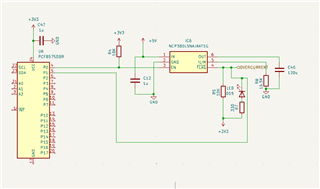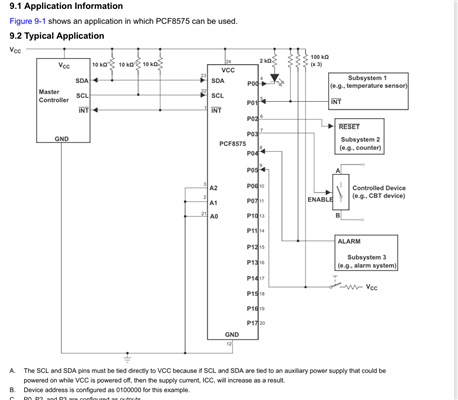Other Parts Discussed in Thread: TCAL6416, TCA6416A,
Tool/software:
Hi All,
I have the schematic below to validate.
- P0 as output , P1 as input.
- At power up I need P0 is not to "0" (ground) otherwise it will be shutoff my current protection chip which i want to avoid. From what i see at startup all GPIO are high so I will be safe , right?
- After power up I need to configure P0 as output but to not going to zero. How can I do that ? Can I:
- write the ouput register relative to "P0" to high
- configure P0 like an output ?
Please an help will be appreciated to finish the design.
Thanks a lot



